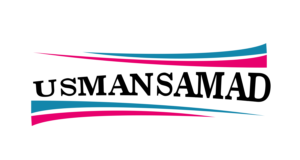Wagtail: The Open-Source CMS That Brings Flexibility and Creativity to Web Development
In a world where content is king, the tools we use to craft, manage, and deliver that content are just as important. Wagtail, an open-source content management system (CMS), has emerged as a versatile and powerful platform for web developers and content creators alike. Built on the Django framework, Wagtail has become synonymous with flexibility, simplicity, and scalability, offering a perfect balance between technical sophistication and user-friendliness. Whether you are an enterprise building a large-scale website or an individual creating a personal blog, Wagtail development provides the tools and the freedom to transform your vision into reality.
What is Wagtail?
Wagtail is a Python-based CMS built on the Django framework. It was designed with flexibility in mind, making it ideal for developers who need a platform that can be easily customized to meet unique project requirements. Wagtail is known for its intuitive admin interface, its powerful content management tools, and its scalable architecture that enables it to handle everything from small personal websites to large, complex enterprise solutions.
Launched in 2014 by Torchbox, Wagtail has grown steadily in popularity. Its open-source nature has attracted a large and active community of developers and contributors who work together to continuously improve the platform. Today, Wagtail powers websites for a wide range of industries, from education and non-profits to publishing and government organizations.
Why Choose Wagtail?
While there are many CMS platforms available, Wagtail stands out for several key reasons. Here are some of the most compelling features that make Wagtail a preferred choice for developers, content managers, and businesses:
1. User-Friendly Admin Interface
One of the standout features of Wagtail is its clean and intuitive admin interface. Content editors can easily create and manage pages without requiring technical expertise. The interface is designed with usability in mind, allowing editors to focus on the content while the system takes care of the rest. The drag-and-drop functionality, built-in image editor, and customizable content fields make Wagtail a pleasure to work with, even for non-technical users.
Moreover, the admin interface is customizable, meaning that developers can tailor it to the specific needs of the project. Whether you need to adjust workflows, add new content types, or integrate third-party tools, Wagtail’s flexibility ensures that the admin panel works exactly how you need it to.
2. Built on Django: Power and Flexibility
Wagtail is built on Django, one of the most widely used Python frameworks for web development. This gives Wagtail a solid foundation, combining the power of Django with the simplicity and user-friendliness of a CMS. Django is known for its security, scalability, and performance, making Wagtail a great choice for developers who want to build high-performance, secure websites.
Because Wagtail inherits all the advantages of Django, it also supports powerful API integrations, custom modules, and the ability to scale to meet the needs of growing websites. Developers can extend Wagtail’s functionality using Django’s vast ecosystem of libraries, tools, and plugins, allowing for a highly customized solution.
3. Flexibility for Developers
At its core, Wagtail is designed to be flexible. Unlike many other CMS platforms that offer a predefined structure, Wagtail gives developers the freedom to design the website architecture they envision. You can build custom content types, define your own page structures, and implement complex business logic without being constrained by the limitations of a traditional CMS.
The StreamField feature in Wagtail is one of the standout tools for developers. It allows you to create highly flexible, dynamic page content that can be easily customized and adapted. Developers can create rich page layouts by combining various content blocks, such as text, images, videos, and more. This makes Wagtail an ideal choice for websites that require a high degree of customization.
Wagtail is more than a CMS; it’s a gateway to dynamic, customized, and innovative web experiences that transcend traditional boundaries in web development.
4. Seamless Content Workflow
Managing content effectively is key to maintaining a successful website, and Wagtail excels in this area. The CMS provides powerful workflow features that allow teams to collaborate seamlessly. Editors can draft and review content before publishing it, ensuring that only the most polished material makes it to the live site.
Wagtail also includes an editorial workflow system that makes it easy to set up content approval processes. Whether you have a team of content creators, designers, or marketers, Wagtail ensures that everyone can work together efficiently without stepping on each other’s toes. The ability to manage different user roles and permissions further enhances the platform’s ability to handle complex workflows.
5. Scalability and Performance
As your website grows, so too does the need for a scalable platform that can handle increased traffic, larger datasets, and more complex functionality. Wagtail’s architecture is designed with scalability in mind, allowing it to handle everything from small blogs to large, enterprise-grade websites. The CMS is built to support high-traffic websites and ensures that performance remains optimal even as your website expands.
With Wagtail, developers have full control over how the platform is deployed, meaning they can optimize server configurations, implement caching strategies, and leverage cloud infrastructure to ensure fast load times and high availability. The platform’s search capabilities are another key element that contributes to its scalability. Wagtail supports powerful search functionality that allows users to quickly find content, even on large sites with extensive databases.
6. Strong Community and Support
Wagtail is an open-source project, and its development is driven by a passionate community of developers, content managers, and contributors. This active community offers invaluable support, whether you’re looking for help troubleshooting issues, seeking advice on best practices, or wanting to contribute to the development of the platform itself.
Wagtail has extensive documentation that covers everything from installation and setup to advanced customization. The official Wagtail website also features an active forum, where users can ask questions, share ideas, and learn from one another. The community-driven model ensures that Wagtail remains responsive to the needs of its users and continuously evolves to meet modern web development standards.
7. Headless CMS Capabilities
In today’s multi-device world, websites are just one piece of the puzzle. Many businesses require their content to be delivered across multiple channels, including mobile apps, IoT devices, and other digital touchpoints. Wagtail is a headless CMS, meaning that it separates content management from the front-end display layer. This allows content to be delivered through an API to any platform, ensuring a seamless experience for users across different devices.
The Wagtail API is fully flexible, supporting RESTful interactions that allow you to build custom solutions tailored to your specific needs. Whether you’re managing content for a mobile app, a custom-built web app, or even a smart device, Wagtail’s headless capabilities make it an ideal choice for businesses looking to create omnichannel experiences.
8. Security and Reliability
Security is always a top priority in web development, and Wagtail takes this seriously. Built on Django, Wagtail inherits the security features that have made Django one of the most trusted frameworks in the industry. Wagtail is regularly updated to patch vulnerabilities and improve security, ensuring that websites built on the platform remain safe from emerging threats.
Wagtail also supports role-based access control, allowing administrators to define who can access and edit specific content. This ensures that sensitive data and content are only accessible to authorized users. With frequent security updates and a commitment to best practices, Wagtail is a platform you can trust.
9. SEO-Friendly Features
In the world of digital marketing, search engine optimization (SEO) is crucial for driving traffic and improving visibility. Wagtail offers a range of SEO-friendly features that help you optimize your website for search engines. From customizable meta tags and structured data to built-in integration with Google Analytics, Wagtail makes it easier to create SEO-friendly websites.
The SEO toolkit in Wagtail allows developers to fine-tune page metadata, ensuring that content is properly indexed by search engines. Whether you’re a developer working on a large site or a marketer focusing on improving organic traffic, Wagtail’s SEO features provide everything you need to optimize your website’s performance in search engine rankings.
Conclusion: Wagtail—Empowering Creativity and Scalability
Wagtail is more than just a CMS; it is a tool that empowers both developers and content creators to build beautiful, scalable websites with ease. Its flexibility, intuitive interface, and scalability make it a standout choice for businesses of all sizes. Whether you’re looking to build a simple blog or a complex enterprise site, Wagtail provides the features and capabilities needed to bring your vision to life.
With its headless CMS capabilities, robust security features, and vibrant community, Wagtail continues to evolve and adapt to the changing demands of Toronto website design. As digital experiences become increasingly omnichannel and data-driven, Wagtail provides the foundation for businesses to succeed in an ever-connected world.
In a world where content reigns supreme, Wagtail stands as a testament to the art of building dynamic, user-centric web experiences. From its flexible architecture to its user-friendly interface, Wagtail is not just a CMS—it’s a platform that fosters creativity, collaboration, and innovation in the digital age.

